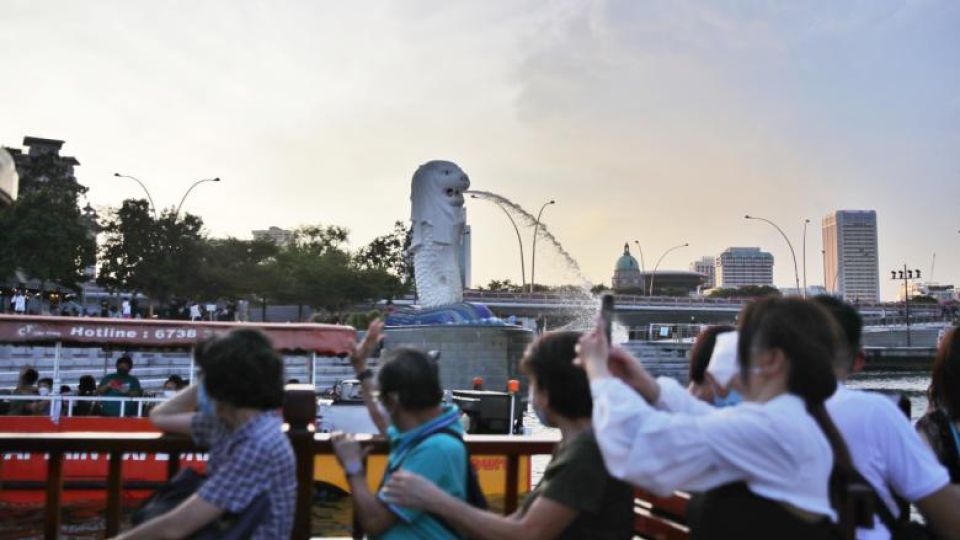March 21, 2022
SINGAPORE – The number of international visitor arrivals is on the rise as Singapore readies to open up its borders to all vaccinated travellers.
But industry players and observers are still waiting for a significant recovery in inbound tourism, with tourists currently a fraction of the travellers entering under the Vaccinated Travel Lane (VTL) scheme.
The bulk of short-term VTL arrivals comprises people visiting friends and relatives in Singapore, which would have a minimal impact on tourism spending, such as on accommodation, they said.
Mr Keith Tan, chief executive of Singapore Tourism Board (STB), told The Straits Times on Friday (March 18) that there were 67,760 international visitor arrivals in February and about 57,000 in January. These represented a year-on-year increase of 273 per cent and 144 per cent respectively.
Compared with August last year, one month before the first VTLs to Germany and Brunei were launched, international visitor arrivals have quadrupled, he noted.
He also said that more than 210,000 passes have been issued to short-term visitors to tap the VTL air travel scheme.
“These figures show there is healthy demand for short-term visits to Singapore,” said Mr Tan.
“Travel recovery will be gradual this year, but we are cautiously optimistic as there is strong pent-up demand for travel to Singapore, even from longer-haul markets.”
The Transport Ministry has said it aims to restore passenger volumes this year to at least 50 per cent of the levels before the Covid-19 pandemic, up from the 15 per cent achieved in end-2021.
A key part of this plan would be to ease restrictions to allow travellers who are fully vaccinated against Covid-19 to enter Singapore, as opposed to just those from countries for which the Republic has started VTLs.
Mr Tan told ST that opening up to all vaccinated travellers is already becoming the norm in other countries. He said STB expects travel volume to pick up over time as travel processes and requirements get simplified.
“This will directly benefit the core tourism industries of hotels, attractions and tours, as well as the adjacent F&B and retail sectors, which have been dependent on domestic demand for the past two years,” added Mr Tan.
He said STB has been working on multiple fronts to prepare for more tourist arrivals, such as by working with the tourism industry to retain key capabilities and recruit staff.
He also cited the example of new partnerships, such as one with travel booking firm Agoda, to reach out to potential travellers in the region.
Tour agencies Hong Thai Travel, Chan Brothers Travel, CTC Travel and Trafalgar told ST that the VTLs have helped to significantly lift their business from the lows during the pandemic, although volumes remained far off from what they were pre-pandemic.
They are, however, optimistic of the rate of recovery picking up this year, with eased entry requirements and reopening to all vaccinated travellers on the horizon.
Mr Steven Ler, president of the National Association of Travel Agents Singapore, said: “VTLs allow access to more people to come in, but I think we need to ease domestic measures more for people to come in… If we can start removing these restrictions, then it’s definitely a lot more welcoming for people to come in.”
He cited the example of dining in groups of up to five people, which would deter organisations looking to hold big events and accompanying networking sessions.
Mr Mike Tansey, managing director and travel industry lead for growth markets at Accenture, said the impact of VTLs has been curbed by a cap on the number of inbound passengers and Singapore’s testing requirements.
The Covid-19 testing requirements, however minimal, create anxiety for travellers, he said.
Singapore is also affected by the border restrictions around the region, which has cut the country off from tourists who use it as a gateway to travel to nearby countries, he said.
In addition, China’s decision to keep its borders shut will hamper tourism recovery, given its status as Singapore’s biggest inbound source market, added Mr Tansey.
“For instance, Marina Bay Sands and Resorts World Sentosa have historically enjoyed significant revenue from Chinese travellers for their casino, hospitality and shopping operations,” he said.
“The longer China stays closed, the slower the tourism recovery.”
But Mr Tan said the agency remains confident in the long-term prospects of Singapore’s tourism sector and its ability to attract quality visitors.
“The fundamentals that make Singapore appealing as a leisure destination remain strong, we are responding to emerging trends, such as wellness and sustainability, and there is continued investment in new products and experiences,” he said.


